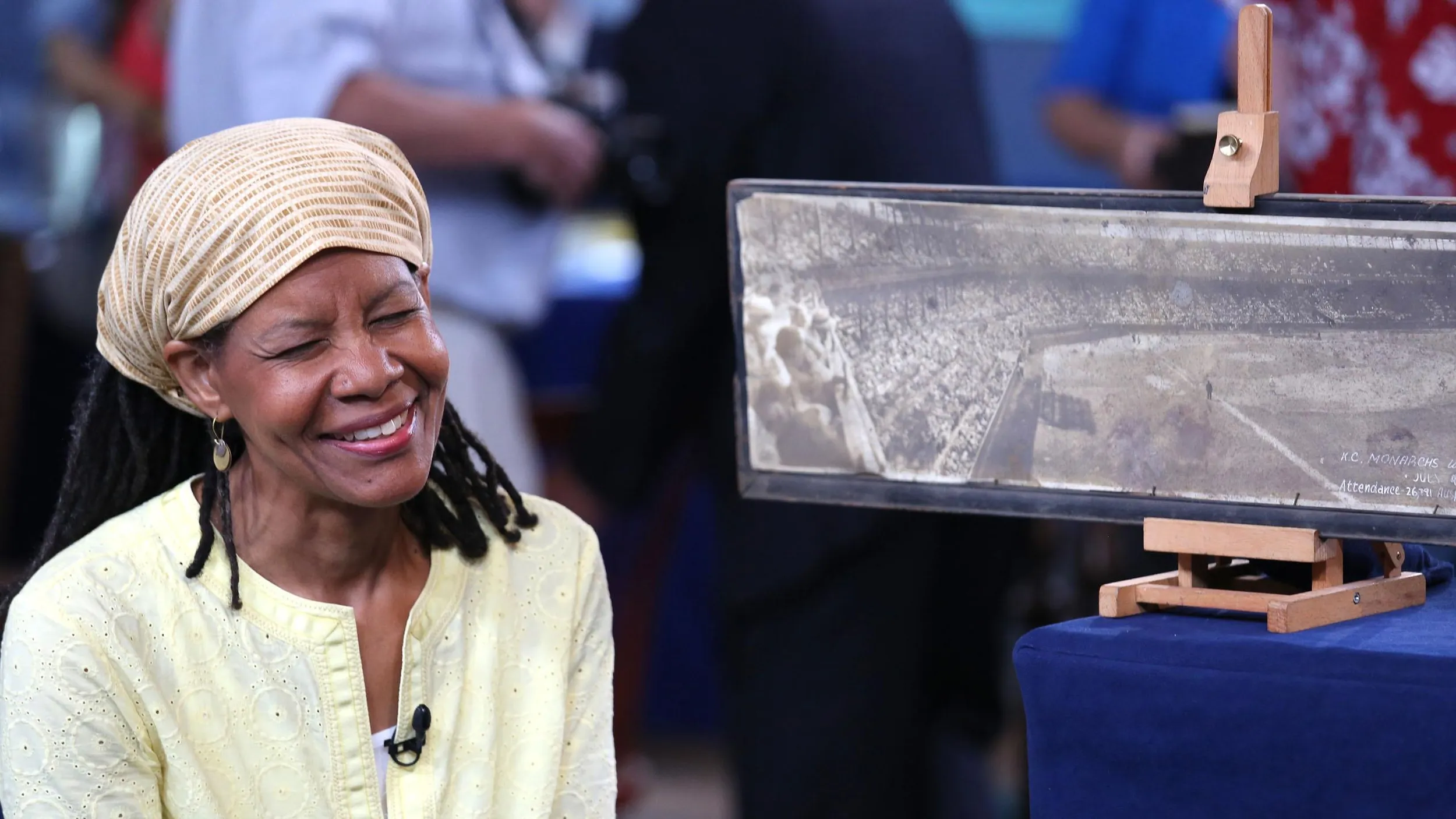GUEST: We've had this clock hanging in our living room for many years now. We inherited it from my husband's father and mother. We really don't know anything about it.
APPRAISER: Never had it appraised?
GUEST: We've never had it appraised. We have been careful, though, not to clean it. If there's one thing we've learned from the ROADSHOW…
APPRAISER: Uh-huh.
GUEST: …it's not to clean anything, so it comes here today accompanied by a little dust, bits and things like that.
APPRAISER: (laughing) Okay. The first moment I saw it, I knew it was something special.
GUEST: Yeah?
APPRAISER: The clock is from around 1870. The French would call it "Napoleon Trois," or Napoleon III-era.
GUEST: Okay.
APPRAISER: "Le Roy et Fils."
GUEST: Yes?
APPRAISER: That's Julien Le Roy and Sons.
GUEST: Okay.
APPRAISER: They're an extremely prestigious clock firm that got their start in 1785, and they are considered some of the most prestigious makers of French clocks in history. They were associated with kings and queens, they had royal charter. It's a spectacular clock to begin with, but with that name on it, it adds so much panache. It's an eight-day clock. I have every reason to believe that it not only strikes the hour, but it also announces the quarters. We've got an enormously beautiful 18th-century-style dial, but it's still a mid-19th-century clock. There's a little bit of damage to the winding holes here, with the enamel. That's not a biggie, but it's there.
GUEST: Okay.
APPRAISER: We see that it has this calendar.
GUEST: Yes.
APPRAISER: Also a very beautiful enamel dial. And it's a very special calendar because it's what we call a perpetual calendar. This perpetual calendar takes into account leap year.
GUEST: Amazing!
APPRAISER: Very cool. And then, of course, working our way down even farther, here's an aneroid barometer. So not only would you know the time, you'd know the date, and you would know the barometric pressure. In addition to that, it has a centigrade thermometer here, which is alcohol-filled.
GUEST: Right.
APPRAISER: And this is a Fahrenheit thermometer filled with mercury. Now, it has some serious condition issues.
GUEST: Yes.
APPRAISER: This carved wood, what we're seeing here is the base wood, but on top of that would have been a layer of plaster, which then had been gilded with gold. So you can imagine how beautiful it was with all of this gilded.
GUEST: Oh, I bet.
APPRAISER: And you can still see some of the gilding, and over the years, that gets chipped away. In its present condition, it's easily worth, at a retail level, between $5,000 and $6,000.
GUEST: Okay.
APPRAISER: Restored and pristine, at a retail level, it would probably be worth $9,000 to $10,000.
GUEST: Mh-hmm.
APPRAISER: It's a diamond in the rough, is what it is.
GUEST: Okay. Well, now I have a better appreciation for it in my living room.
APPRAISER: Very good.



